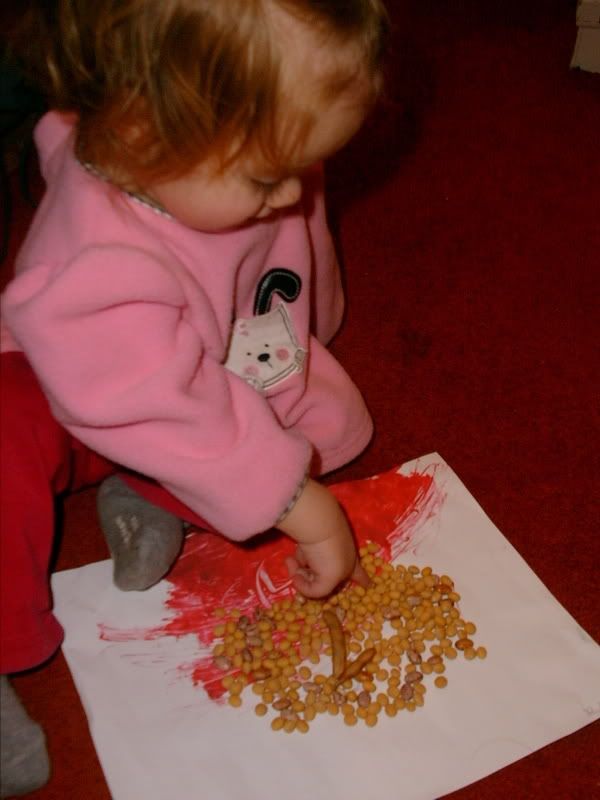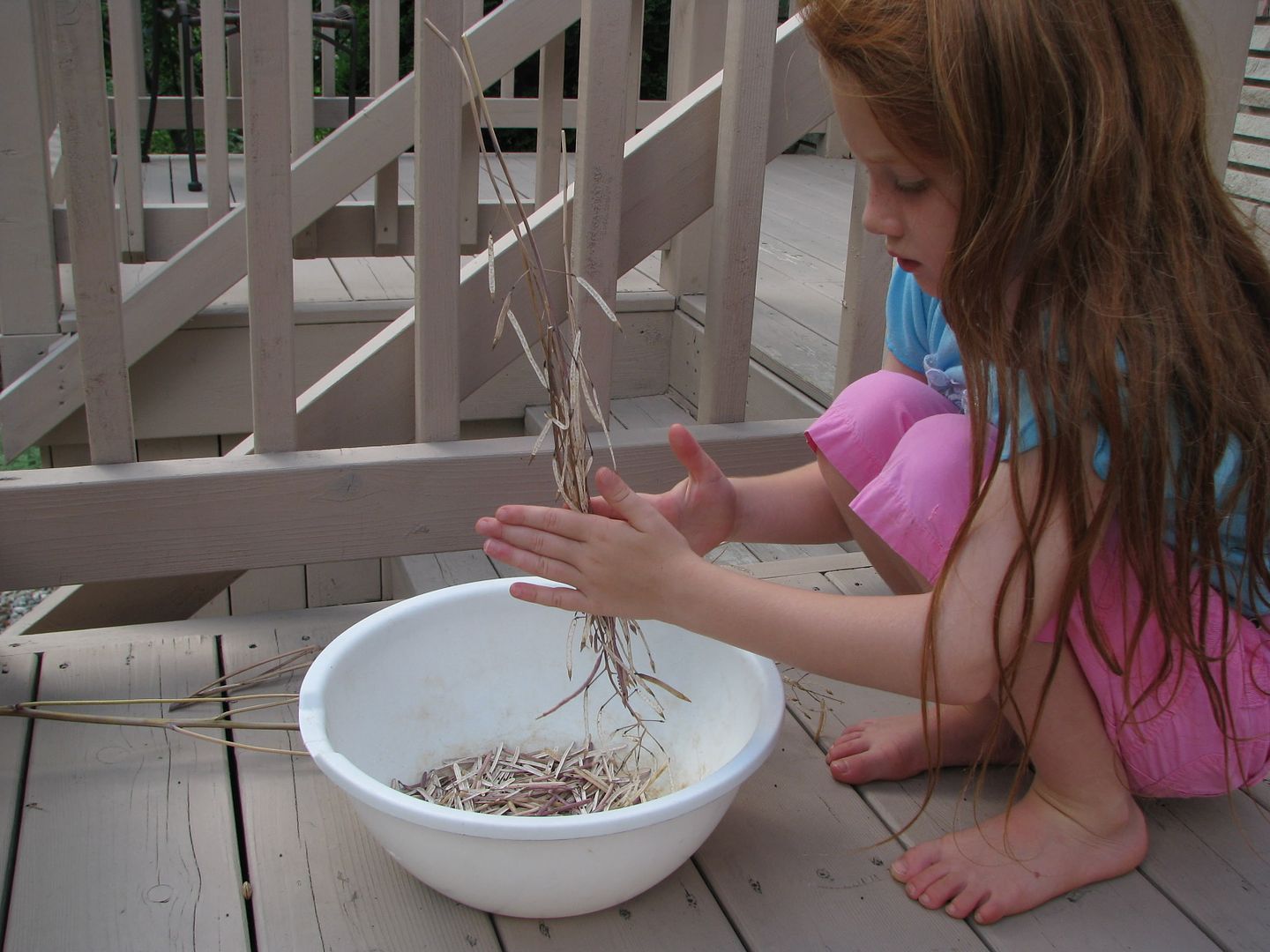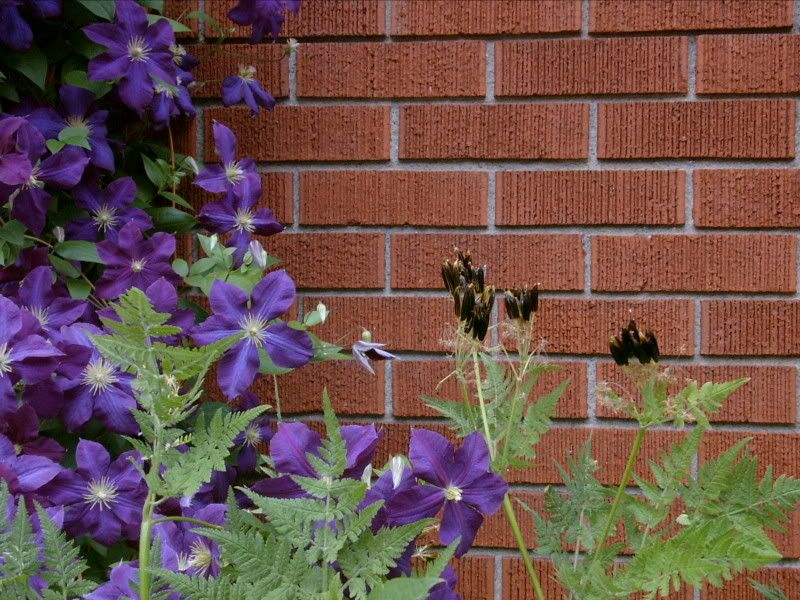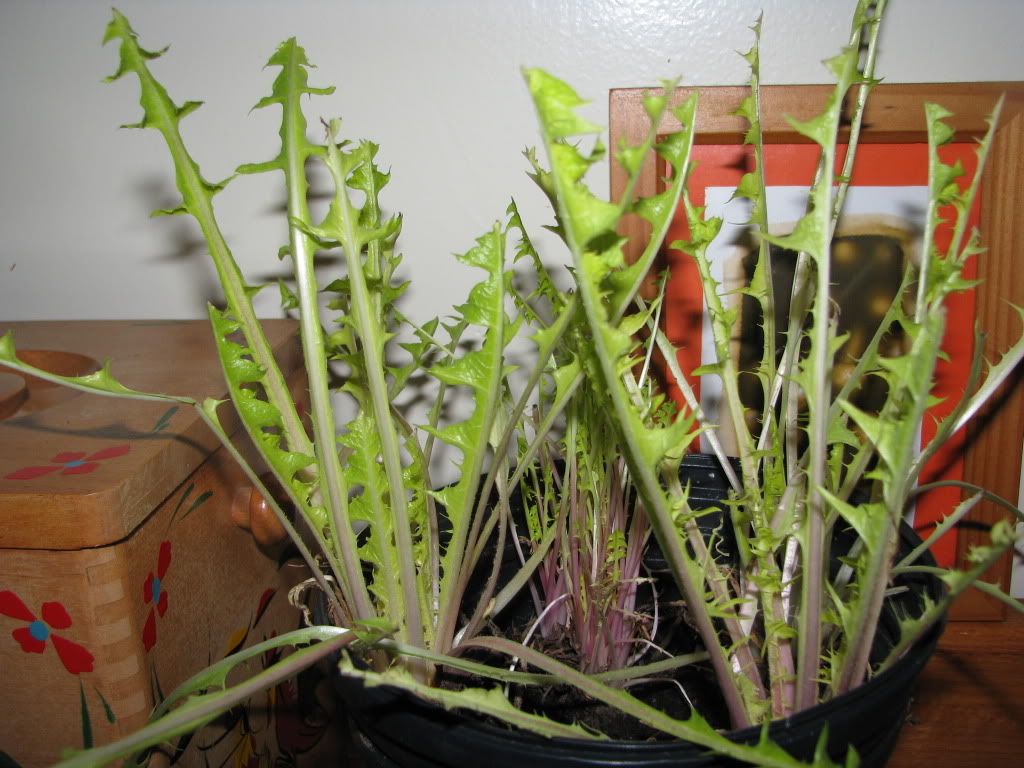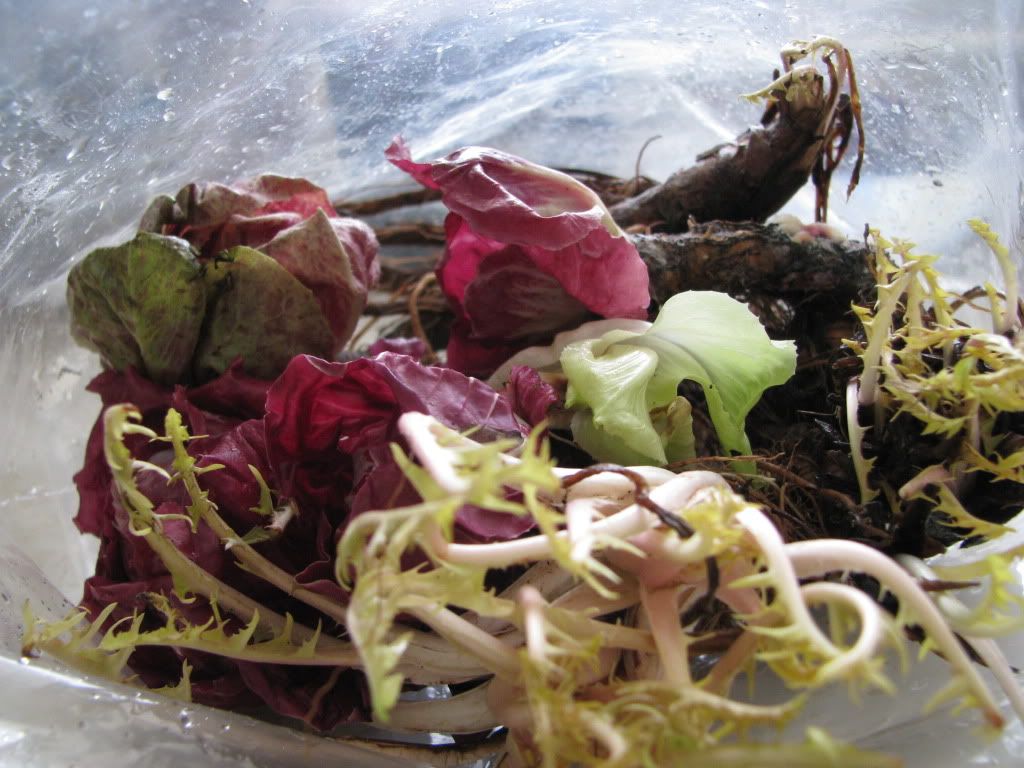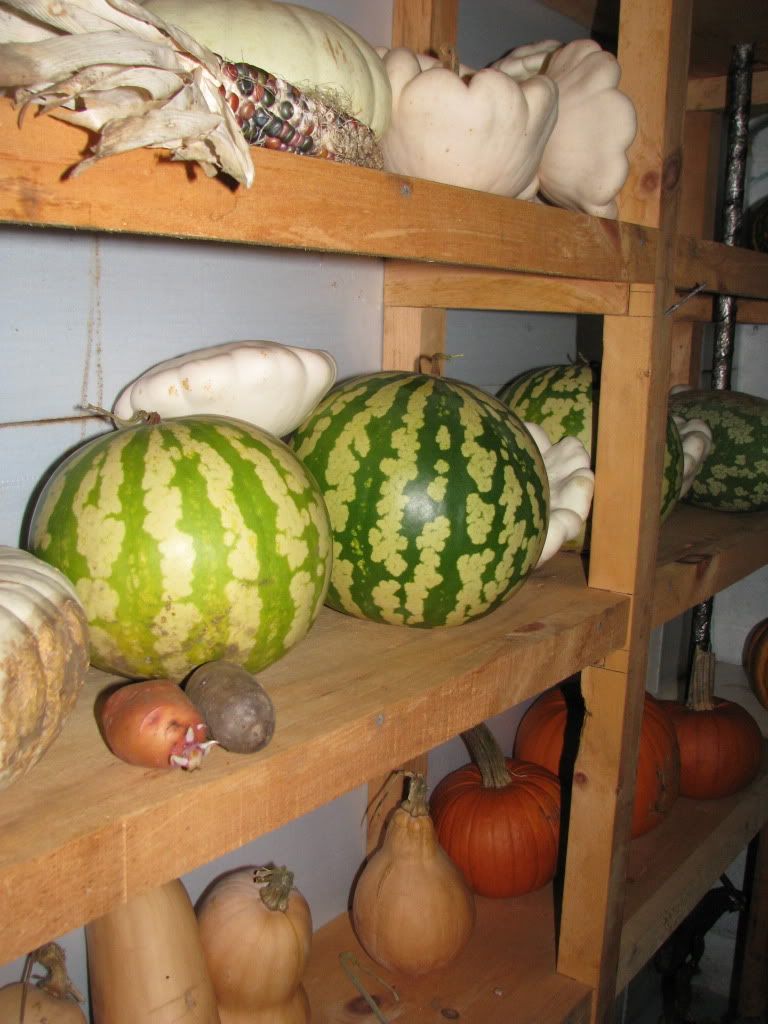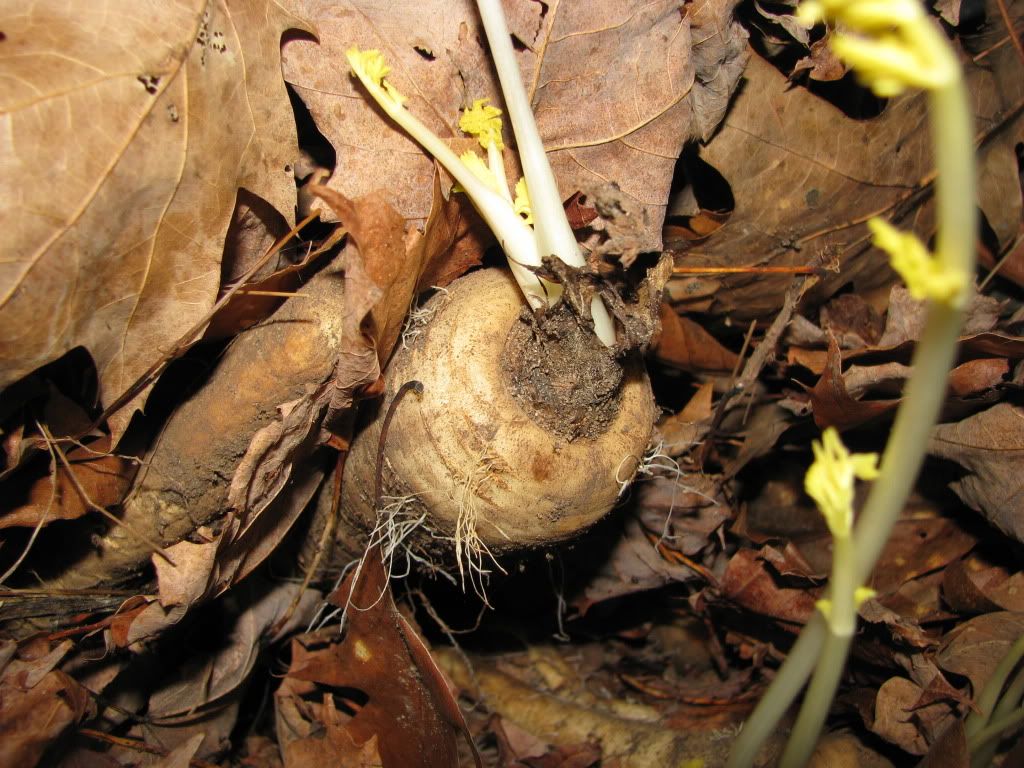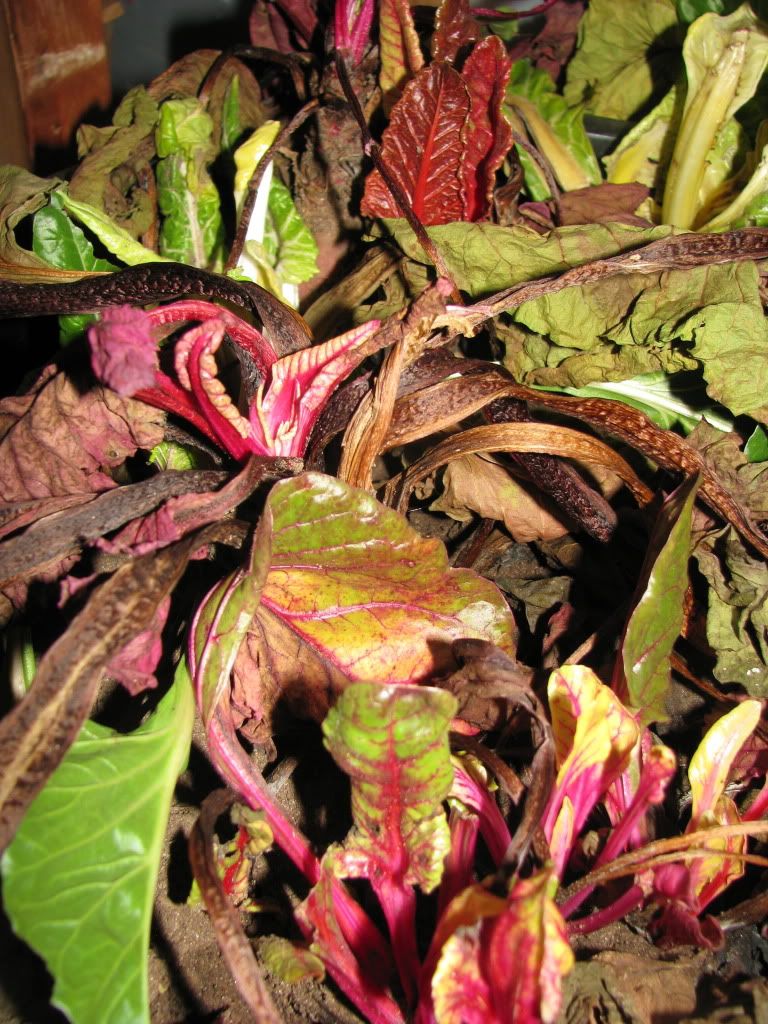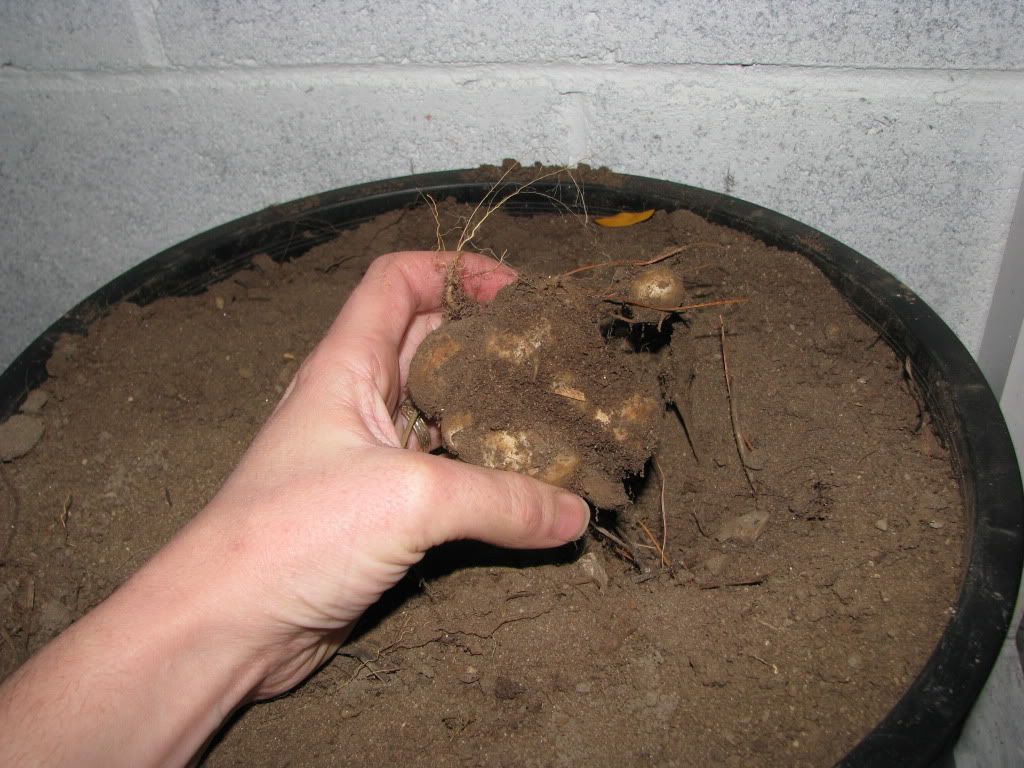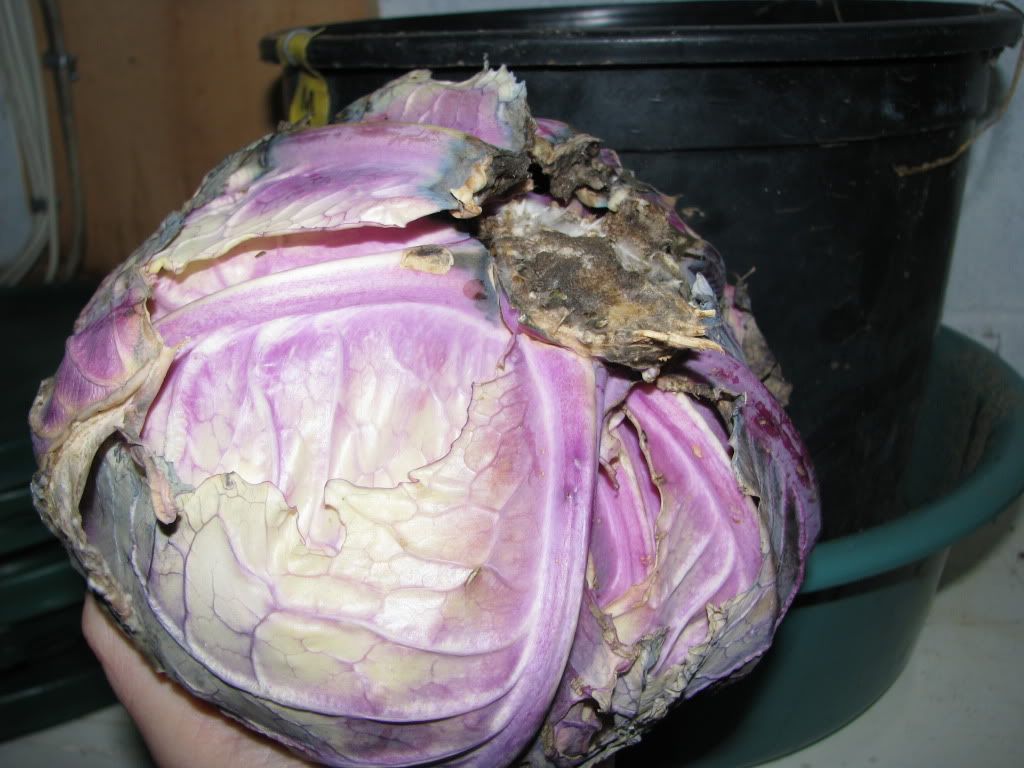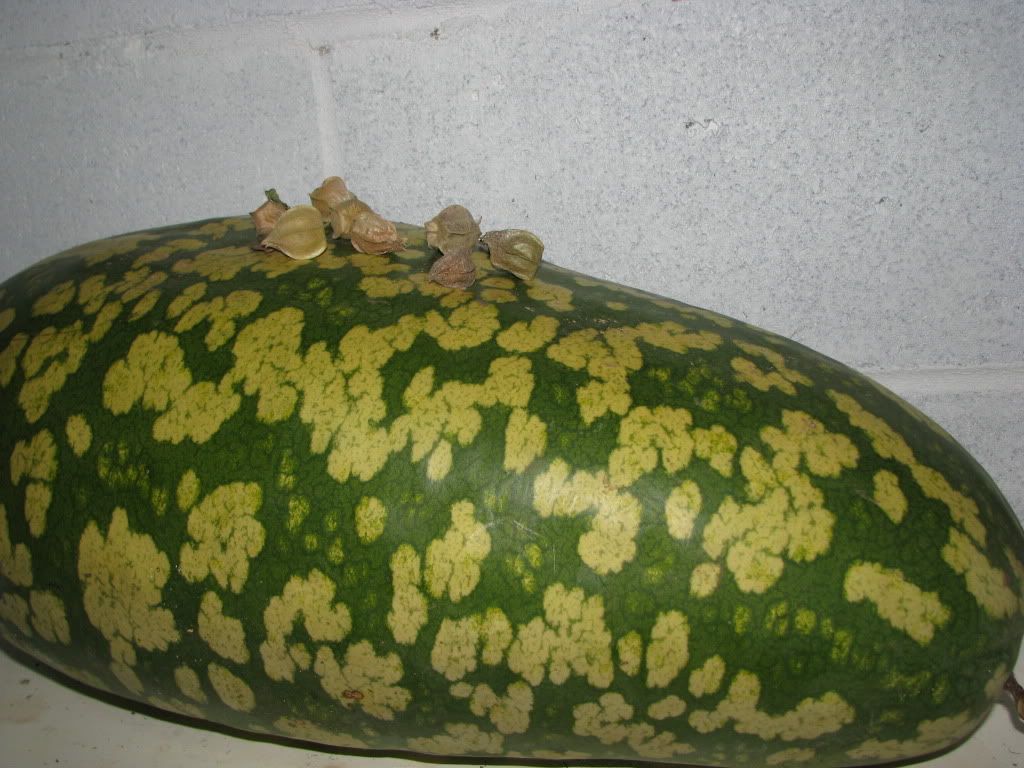Sure all seeds are seeds. After all if they weren't, we'd call them something else like grains or gerbils. But there are movements afoot and sometimes they are bannered by sleeping baby plant packages.
Organic vs. Treated
A blast from the past: Here's my youngest as a toddler playing with an unnamed soy bean that had been saved for generations on a farm. Given out at a terminator seed protest. I grew it out for years before turning it over to a small living seed bank.
To produce the seeds, you need plants. If these were grown organically, then some standard - this varies from place to place - must have been met. For example, your seeds were not grown with the help of death-icides or chemicals fast food fertilizers. The seed house may be officially certified - see Cottage Gardener - or they may simply state that they are organic because, for example, their land may still be in transition.1
Some seeds are additionally treated after harvest with fungicides or other chemicals. This will often make them weird colours. Normally it will say on the seed package, but this is a good reason not to eat any seeds not marketed for that purpose. Your own extra seeds make the best sprouts anyhow. Some plants really pump out those seeds too. Yes, I'm talking to you mustard.
Hybrid vs. Open Pollinated
If you are planning on saving your own seed, then it is easiest to start with plants that are open pollinated. This means that the baby plants will be similar to the parent plants. Hybrid seeds are (usually) produced by cross pollinating two distinct, genetically predictable (such as inbred) parent lines. The result is highly uniform but if you were to save seeds from them then the genes get reshuffled and you cannot predict the exact result.2 The statement, "you can't know what you'll get" is a bit misleading however as a gardening friend once pointed out. If you grow out seeds from a hybrid pepper plant you will get.... a pepper plant.3
Hybrids are created to produce, among other things, uniform results in size, yield time and to incorporate resistance to negative pressures such as disease or pests. If you want a particular trait in your plants and can't find them in an OP (open pollinated source), you could try growing out some seed saved from hybrid plants. After several generations of selection, you may have a strain that maintains that trait AND is more or less predictable in form from one generation to the next. In other words, you will have de-hybridized the hybrid. This is a common hobby among backyard breeders. The delectable hybrid tomato Sungold has been, or is in the process of being, dehybridized in all sorts of ways. Big Sungold is an example mentioned on Tatiana's Tomatobase.
It will usually say on the seed packet/description that it is a hybrid. Another clue is an F code behind the name. F1 means that it is a first generation hybrid.
Some people believe that certain plants need to be hybrid or they will be dismal failures. Around here, the brassicas such as broccoli and the melons are often touted as flops if they are not F1. I have not found this to be true. Once you know how to grow these plants, both of them are top performers. Keep in mind that I do not run a CSA nor am I a commercial farmer so maybe I have different acceptable margins.
Heritage/Heirloom vs. Traditionally Bred
Some people are allergic to plants that are created any later than 1930. Often very old and perfectly good varieties are in danger of being lost because they are just not grown. It has been argued that very, very old varieties may have been inadvertently selected as extra healthy because people depended on them to survive. The hypothesis goes that families and varieties co-evolved meaning that families/localities growing the best varieties had more reproductively successful children etc... you know the theory. To dis/prove this you would have to do a nutritional analyses on the crops. Keep in mind too that you would have to use the same cultural practices - ways of working the land, growing the crop - as they did under the same climatic and soil conditions to achieve a similar result. That's not to say that heritage varieties aren't worth growing or aren't healthy. I'm just complicating matters.
My eldest threshing some cabbage seed.
Unfortunately, the rarer of these varieties can suffer from one of two effects by being seldomly grown out. They may have lost a lot of genetic diversity as the seed parent pool is quite small especially if they are out-breeders4. Alternatively, they may no longer have the traits they did in the past. Maybe the solid orange squash from 1890 now has yellow stripes because of cross breeding with other cultivars. Both these situations call for revitalization. If you have a pet variety, you can grow out lots of it and reselect for the original characteristics (assuming they haven't lost the genes responsible for them) or you can intentionally cross them with something similar to increase their genetic diversity and vigour. Of course by crossing them, you are creating something new but that's okay in my books. In this way, you might get a great crop that maintains the original variety's genes even if the phenotype (form) is slightly different. It's like the heritage variety is hiding out in the new variety. Or you could reselect for something that looks like the original.
I love heritage varieties. There I said it. I didn't want you to think otherwise. I don't worship them but I do really like them and I do like to believe that co-evolution hypothesis if for no other reason than it sounds neat.
But what you ask is the definition of a heritage/heirloom crop? It varies but the internet consensus seems to be that it has been created and maintained in a traditional way for at least 50 years (some use before the end of the second world war as a time limit) though others say at least 100 years old.
Even today, people are breeding plants in traditional ways. Some may be saving all seeds from high and poorer performing plants. This can maintain more genetic diversity as not all plants perform the same from year to year because of variations in pest/disease pressures and weather. That said, you will probably have some plants that produce consistently higher seed yields and therefore self select. Other breeders intentionally cross plants either with a goal in mind like a purple turnip or just to see what will happen. This blogger's fun with cabbage breeding.
These modern reselections, de-hybridzed crops or intentional breeding projects have value! Wild Garden Seeds (a fav of mine) is busy producing disease resistant lettuce in what they call hell's half acre and strawberry spinach with more reliable germination. That sounds as cool as ancient veg. to me.
Wild Collected vs. Raised Local or otherwise
Seeds in catalogues are produced by an assortment of growers. Small companies often grow a lot of their own seed but also may have other people grow a portion of it. The growers may or may not be nearby. If you are looking for locally adapted varieties, inquire. On occasion, seed companies will merely be reselling seeds from other suppliers. Hopefully they are forthright about where they get their wares.
Other seeds, especially of native varieties, are collected in the wild. As best you can, you should be sure that the collectors are doing so in an ethical way - i.e., taking only a few seeds from different populations if they are rare varieties and none from endangered crop populations unless they have permission and are attempting to increase the population. The same holds if you are the collector.
Speaking of seed explorers, I have seen seeds offered from collections made off of a neighbour's interesting tree, a weird looking bean found on vacation at a market, or even a tag along seed that didn't belong in someone's soup mix.
Grex, Mix or Landrace?
Ripe species seeds from Myhrris odorata - no cultivar name - or Sweet Cicely.
It is becoming more popular to sell seed mixes. Often it'll say 'using our special formula' implying a precision mix. This means that they are adding seeds from different batches together. On the other hand a grex is the herd of babies produced by a cross. These are sister and brother plants that don't necessarily all look a like. Extreme Gardener talks chicory greges.
Which brings me to landraces. These are populations of plants that come from a particular locality and show variability. For example, a landrace of soup peas might have different dry colours and growth type but it is traditionally all saved together and used to make soup. Language - being a means of communication - has led to the evolution of the use of this term so that landrace can refer to intentional variability by mass crossing plants. Here is Joseph's definition of an adaptivar landrace and some of the interesting work he does on his farm.
And finally, when growing many herbs or unusual vegetables from seed, there may be no named cultivars at all. This does not mean that there aren't different varieties, so getting a species variety from two different spots may give you plants that vary in dates to maturity, shade tolerance and so on. Even the seeds grown out from one area may vary considerably. Often, there ARE named varieties even if it is just a regional name attached but because it is unusual to us, we clump them all together.
'K - go out and buy some seeds now.
1 For example, here's some organic regulation standards linked from Canadian Organic Growers.Or you could try and navigate this omafra site.
2 So you want an (overly simplistic) example? Okay let's say you have two parent plants. One has the following genes for three traits: aabbcc. The other plant has these complementary genes: AABBCC. Now form 'a' and form 'A' are for the same gene but each parent has two of the same. When you cross these two inbred lines you get uniformly plants that are aAbBcC as the babies each get one gene from each parent. If you were to let these F1s cross and make baby seeds then you would be crossing two plants with the genes: aAbBcC x aAbBcC. The result could be any of the following: aabbcc, AABBCC, or aabBcC, aABBcc, aaBBcc, etc... See? They may be more like one parent or the other and who knows what the parents were like.
Some people claim that all hybrids are produced to be dependent on big-agri crutches like chemical fertilizers. Though the holy grail of capitalism is to create brand dependency, such as GMOs that work with certain pesticides, this is not always the goal. I don't endorse F1s per se but I don't see anything inherently wrong with them especially when they are produced by combining two cross-pollinating OPs together to invigorate a crop. These may or may not be uniform but they also may show the glorified hybrid vigour. My point is you don't need a lab to do it. It can be done in a garden setting and it might be to your benefit depending on the situation. Or it might just be a fun science experiment.
Here is a decent explanation - It also lists a three line system which uses more than two parent line hence the qualifier in my description.
3A plant that is produced by crossing two closely related species could also be called a hybrid. Obviously this is more unpredictable and it is possible to have mules - sterile plants. If the hybrid process used male sterility in one parent line, I suppose it is also possible to pass on this trait to seedlings. My experience so far, however, is that hybrid plants produce F2 babies which produce F3 seeds and so on.
4 Outbreeders are plants that require cross pollination of others of their kind to produce healthy, viable offspring. Otherwise, they suffer from inbreeding depression meaning decreased fitness and fertility. They are normally wind or insect pollinated. Examples are cabbages or corn. This contrasts with inbreeders that are often self pollinating and need smaller populations of parent plants to produce healthy offspring. More on the subject.

